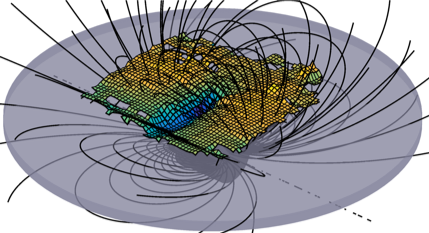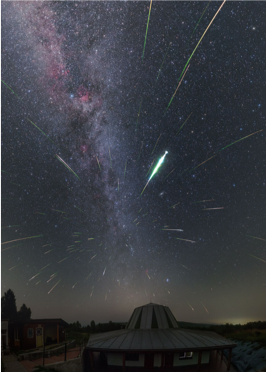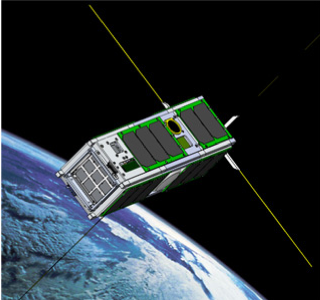Dust Diagnostics & Control
Plasma is the most abundant, yet least understood state of matter in the universe. CASPER scientists develop tools for detection and analysis of cosmic environments with high concentration of charged dust particles. In a separate project, we work on high-precision diagnostics techniques, where individual dust particles are used as probes for characterization of laboratory plasma environments.
Dust Probes
Dust grains immersed in plasma become negatively charged from electron collection and are subject to both plasma drag forces and collective plasma interactions. Due to their small size, usually millimeter (10−3m) to nanometer (10−9m) in diameter, the dust particles are highly sensitive to changes in the plasma environment. Scientists at CASPER are developing techniques that allow for mapping of the forces acting on dust particles in various plasma discharge devices. One such technique is the dust dropping method, where a large number of dust grains are dropped into the plasma environment and their trajectories tracked using a high-speed camera system to determine local accelerations and respective forces. Data from the particle drops allow for the reconstruction of three-dimensional vector-fields for the acting forces and analysis of the underlying plasma fields.
Faculty & Staff: Truell Hyde, Lorin Matthews, Jie Kong, Ke Qiao, Jorge Carmona Reyes, Kenneth Ulibarri, Mike Cook Background Literature
CASPER Papers
Dust Detectors & Small Satellites
Spacecraft in near-earth orbit and on deeper space missions are subject to damage from impacts with interplanetary dust and orbital debris. Low velocity (less than 1 km/s) impact studies are designed to characterize the dust encountered in space and test materials for damage. CASPER develops diagnostics and science packages for use on spacecraft, including nanosatellites and space missions.
Small Satellites provide opportunities for research in near-earth orbit and as components of deeper space missions. CASPER has specific interest in the detection of interplanetary dust and orbital debris. Researchers at the Dusty Plasma Lab currently develop science instruments for several active flight missions. REUs and research fellows can participate in the following research activities (among others):
Single-stage gas gun experiments
- Corroboration of the sensitivity map for a stainless-steel plate with piezoelectric lead zirconate titanate (PZT) crystals attached.
- Damage assessment of aluminum and stainless-steel plates, using different projectile materials and sizes.
ARMADILLO 3-unit CubeSat
- Research and design of dust detector systems.
- Design and development and testing of electronics, mechanical system, and spacecraft interface.
Faculty & Staff: Truell Hyde, Rene Laufer, Lorin Matthews, Jorge Carmona Reyes, Kenneth Ulibarri, Mike Cook
Background Literature
CASPER Papers




